
Erythromycin is a macrolide antibiotic that binds to the 50-S subunit of the ribosomes. It kills susceptible bacteria by interfering with their protein synthesis.
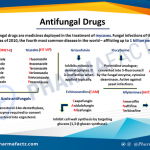
A number of systemic fungal infections (e.g., histoplasmosis, coccidioidomycosis, and paracoccidioidomycosis) can also afflict otherwise healthy persons. Until recently, only amphotericin B was available to treat systemic fungal infection. However, with the rapid development and clinical assessment of azole compounds, a number of these agents are also considered appropriate for treatment of fungal infections.
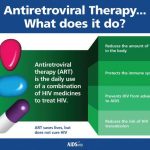
Decisions regarding when to initiate or modify antiretroviral therapy should be guided by monitoring plasma HIV-1 RNA levels (viral load), CD4+ T-cell counts, and the clinical condition of the patient. Although various other surrogate markers and laboratory parameters were used in the past to assess the risk of progression of HIV infection and evaluate efficacy of antiretroviral agents.
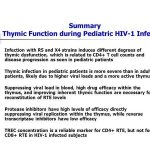
Progressive neurodevelopmental deterioration is defined as persistence or progression of deterioration documented on repeated testing as demonstrated by the presence of 2 or more of the following findings: impairment in brain growth, decline in cognitive function documented by psychometric testing, or clinical motor dysfunction. If there is evidence of progressive neurodevelopmental deterioration, the new antiretroviral regimen optimally should include at least one drug that has substantial CNS penetration (e.g., zidovudine or nevirapine).
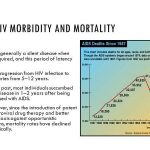
Patient compliance with recommended regimens (even when asymptomatic) is essential to the potential benefits of antiretroviral therapy. Adherence to antiretroviral regimens is an important determinant of both the degree and duration of virologic suppression. Excellent adherence has been shown to increase the likelihood of sustained virologic control, which is important for reducing HIV-associated morbidity and mortality. Poor adherence has been shown to increase the likelihood of virologic failure and can lead to the development of resistance and limit the effectiveness of antiretroviral therapy.
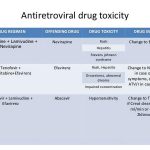
While further study is needed, data are accumulating regarding pharmacokinetic interactions among the various antiretroviral agents, especially those involving the HIV protease inhibitors and NNRTIs, and the need for dosage adjustments as a result of these interactions. While some pharmacokinetic interactions between antiretroviral agents can be used for therapeutic advantage (e.g., use of low-dose ritonavir to boost plasma concentrations of some other HIV protease inhibitors), other interactions can result in suboptimal drug concentrations and reduced therapeutic effects and should be avoided. The pharmacokinetic interaction between ritonavir and other HIV protease inhibitors is now used for therapeutic advantage in various antiretroviral regimens.
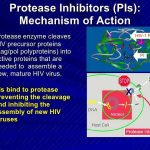
The fact that hyperglycemia, new-onset diabetes mellitus, exacerbation of preexisting diabetes mellitus, and diabetic ketoacidosis have occurred in HIV-infected individuals receiving HIV protease inhibitors should be considered when these drugs are used during pregnancy. Because pregnancy is itself a risk factor for hyperglycemia and it is not known whether use of an HIV protease inhibitor exacerbates this risk, glucose concentrations should be monitored closely in pregnant women receiving these drugs and these women should be advised about the warning signs of hyperglycemia and diabetes (e.g., increased thirst and hunger, unexplained weight loss, increased urination, fatigue, dry or itchy skin).
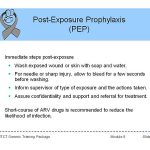
Since most occupational exposures to HIV do not result in transmission of the virus, the potential toxicity of PEP regimens must be considered carefully and, whenever possible, prophylaxis should be implemented in consultation with clinicians who have expertise in antiretroviral therapy and HIV transmission. Modification of the recommended regimens may be appropriate based on factors such as whether the source patient is known or suspected of being infected with drug-resistant strains of HIV; the local availability of antiretroviral agents; and the medical condition, concurrent drug therapy, and drug toxicity in the exposed health-care worker. A decision to offer such prophylaxis should be individualized taking into account the likelihood of HIV transmission occurring, the potential benefits and risks of such prophylaxis, and the interval between the exposure and initiation of therapy.
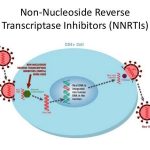
Safety and efficacy of zidovudine in pregnant women have been established and the drug appears to be well tolerated during pregnancy. In addition to zidovudine, data are available from clinical trials in pregnant women for didanosine, lamivudine, and stavudine; data regarding use of abacavir or tenofovir disoproxil fumarate (a nucleotide reverse transcriptase inhibitor) are not available to date. Follow-up of uninfected children born to women enrolled in study PACTG 076 (from birth to a median age of 4.2 years) has not revealed any difference in growth, neurodevelopment, or immunologic status among infants born to women who received zidovudine for prevention of maternal-fetal transmission of HIV compared with those born to women who received placebo.
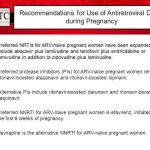
Recommendations for use of antiretroviral agents for the treatment of HIV infection in pregnant HIV-infected women generally are the same as those for nonpregnant HIV-infected adults, and women should receive optimal antiretroviral therapy regardless of pregnancy status. Although zidovudine is the only antiretroviral agent currently labeled for use in pregnant women, most clinicians do not consider pregnancy a contraindication for multiple-drug antiretroviral therapy when such therapy is indicated, especially during the second or third trimester.